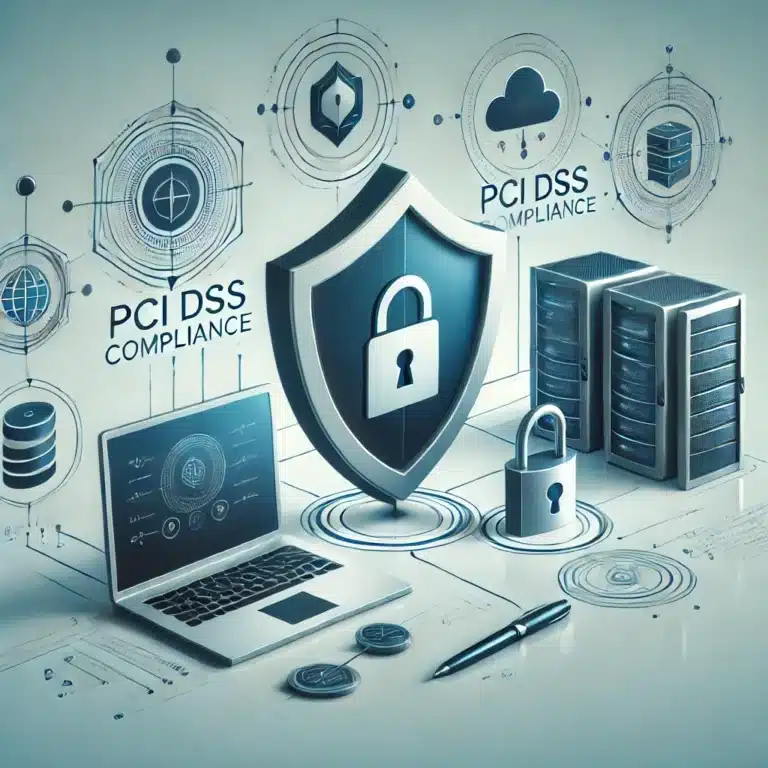In today’s rapidly evolving threat landscape, businesses must prioritize cybersecurity compliance to safeguard their data and systems. However, staying compliant isn’t just about having the right tools—it’s about ensuring that the right processes are followed consistently and accurately. One key way to achieve this is by having well-documented procedures.
Documented procedures are the backbone of any successful cybersecurity compliance program. They ensure that everyone in the organization understands their responsibilities and performs tasks in a way that’s compliant with industry regulations. No matter how skilled your team is, without detailed, clear instructions, your cybersecurity efforts are at risk of inconsistency.
In this post, we’ll explore why documented procedures are essential, how they tie into compliance frameworks, and what you can do to build effective procedures for your organization.
What Are Documented Procedures in Cybersecurity?
Documented procedures refer to step-by-step guides that outline how specific cybersecurity tasks should be carried out. They can range from instructions on setting up encryption for sensitive data to detailing how to respond to a security breach.
In a business environment, these procedures are vital because they offer clarity. They remove the guesswork from critical tasks, ensuring that no matter who’s handling the task, it’s done the right way every time.
Some common procedures that need to be documented in any cybersecurity compliance program include:
- Incident response protocols
- User access management
- Data encryption and decryption processes
- Network monitoring and vulnerability scanning
- Security patch management
Why Detailed Procedures Matter for Cybersecurity Compliance
When it comes to compliance, consistency is everything. Regulations and standards like PCI DSS, ISO 27001, and others are not just focused on having the right security controls—they also demand that those controls are consistently implemented across the organization.
Imagine a scenario where one team manages a security incident perfectly, following best practices, but another team handles a similar situation haphazardly. The result? A potential data breach, a compliance violation, and serious financial and reputational damage.
Detailed procedures ensure:
- Consistency Across Teams: No matter who is tasked with the responsibility, a documented procedure ensures the task is done consistently, minimizing the risk of errors.
- Scalability: As your business grows, having clear, repeatable processes ensures that new teams or employees are up to speed quickly, maintaining the same level of security and compliance.
- Audit Readiness: Well-documented procedures provide a paper trail that auditors can review, showing that your business is consistently meeting its compliance obligations.
The Link Between Documented Procedures and Compliance Frameworks
Many cybersecurity compliance frameworks explicitly require documented procedures as part of their controls. Whether it’s PCI DSS, which mandates documented encryption processes, or ISO 27001, which demands documented information security practices, frameworks recognize that without formalized instructions, security controls can’t be reliably implemented.
But the benefits go beyond just meeting compliance requirements. When procedures are properly documented:
- Audits Become Easier: During an audit, having well-documented procedures demonstrates to auditors that you’re prepared and following the correct protocols.
- Accountability Is Clear: Every procedure should have a designated owner, ensuring that there’s accountability and clarity on who is responsible for each task.
Without proper documentation, compliance audits can become a nightmare of disorganized processes and incomplete information.
Components of Effective Documented Procedures
Not all documentation is created equal. A good documented procedure must be clear, actionable, and easy to follow. Here are some key components of an effective cybersecurity procedure:
- Clear Instructions: Avoid jargon or overly technical language unless absolutely necessary. Procedures should be written in plain language that any member of your team can understand.
- Roles and Responsibilities: Clearly define who is responsible for each step in the process. This ensures accountability and makes it easy for others to know who to contact for help.
- Version Control and Regular Updates: As cybersecurity threats evolve, so must your procedures. Keeping procedures up to date with version control ensures that everyone is following the latest guidelines.
- Accessibility: Procedures should be stored in a central, easily accessible location so that employees can quickly find the information they need.
Best Practices for Creating and Maintaining Cybersecurity Procedures
Now that we understand the importance of documented procedures, let’s look at some best practices for creating and maintaining them:
1. Engage Key Stakeholders
When writing procedures, involve people from various departments—especially those who will be responsible for executing the tasks. This ensures the procedures are practical and reflect real-world workflows.
2. Periodic Review and Training
Procedures should be reviewed regularly to ensure they are still relevant and effective. In addition, regular training sessions should be conducted to make sure employees are following the documented procedures correctly.
3. Automate Where Possible
Automation can significantly reduce the chance of human error. For instance, automating routine tasks like security patching or vulnerability scanning can ensure they are done consistently and on time.
Common Pitfalls and How to Avoid Them
Even with the best intentions, there are some common mistakes businesses make when creating and maintaining documented procedures:
- Overly Complex Procedures: If your documentation is too complex, employees will either struggle to follow it or skip steps. Keep it simple and clear.
- Failure to Regularly Update: As we’ve mentioned, procedures need to evolve. Failing to update them as technology or regulations change can lead to compliance violations.
- Lack of Employee Buy-In: If your employees aren’t on board, they won’t follow the procedures properly. Regular training and communication can help ensure everyone understands the importance of compliance.
Conclusion
In cybersecurity compliance, well-documented procedures are essential. They ensure tasks are performed consistently, mitigate risks, and make audits smoother and less stressful. Without them, your business is vulnerable to inconsistent practices that can lead to compliance violations or worse, security breaches.
Start by reviewing your current documentation. Is it clear, actionable, and up to date? If not, it’s time to create or refine your procedures to better protect your business and ensure compliance.
Final Thoughts
Ready to take the next step? Use this checklist to start improving your cybersecurity procedures today:
- Review current procedures for clarity and relevance.
- Assign ownership to each procedure.
- Implement a version control system.
- Schedule regular updates and employee training.
Remember, your documented procedures are your first line of defense in both cybersecurity and compliance.




